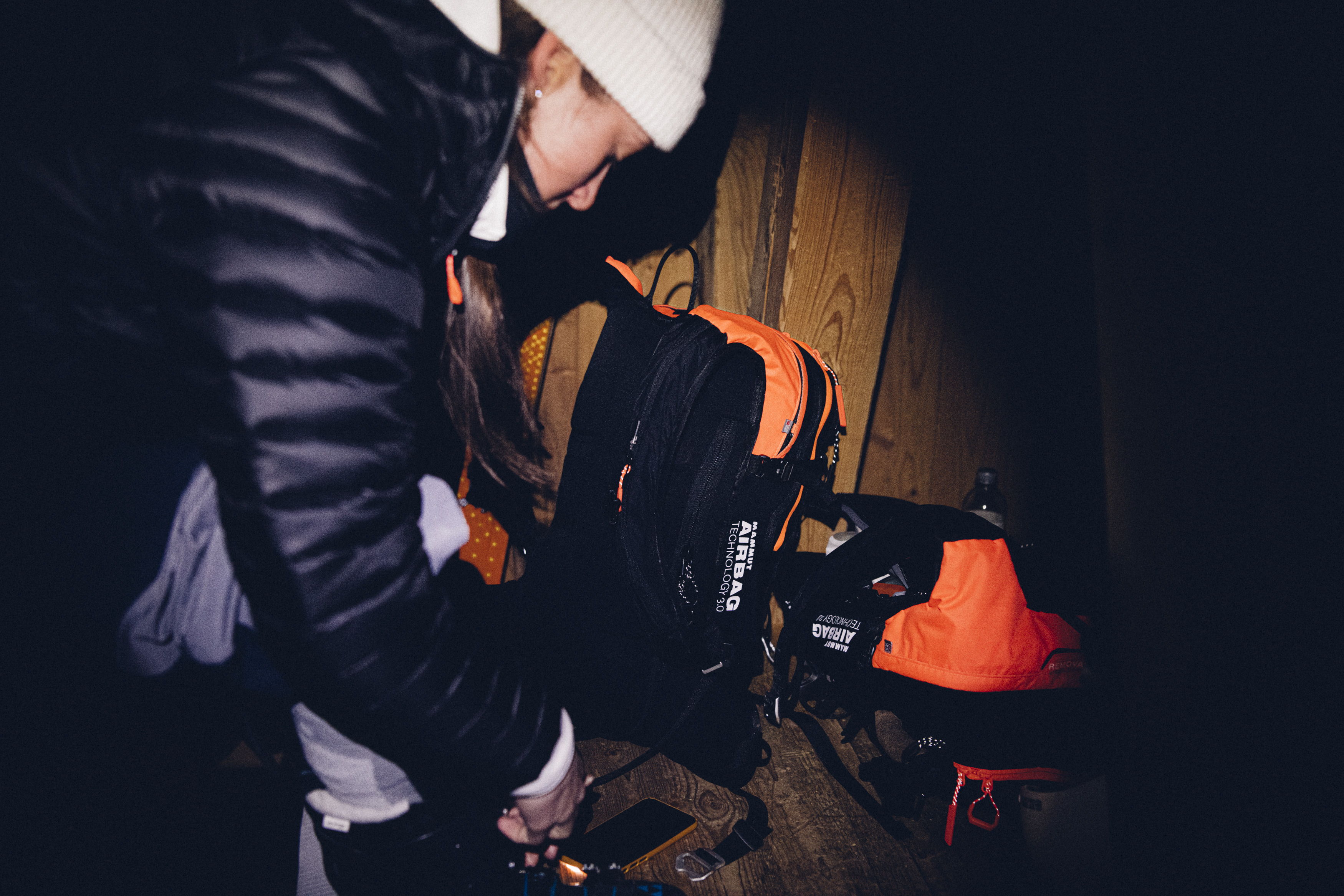MISLEADING TEST RESULTS FOR AVALANCHE AIRBAG SYSTEMS PUBLISHED
Statement
November 17, 2022

In brief
- All new Mammut airbag systems are tested and certified in accordance with DIN EN 16716-2017 at the world's only approved testing institute for airbags, TÜV Süd. Mammut airbag systems pass these standard tests and exceed the legal requirements.
- Following a fatal avalanche accident in Nendaz, Switzerland in 2021, the Swiss authorities investigated how the accident happened.
- On Wednesday, November 9, the regional public prosecutor's office published a communication stating that no legal action would be taken against Mammut.
- The public prosecutor's office published false statements based on test results from an unauthorized test laboratory, thus unjustly discrediting the Mammut brand.
- Mammut was not involved in the tests commissioned by the public prosecutor's office. The test results were made available to Mammut less than 30 minutes before the publication of the communication on November 9, 2022.
- Mammut questions the actions and communication of the public prosecutor's office – the results of the analysis are not valid.
Statement Mammut
Mammut has fully supported the authorities in their efforts to clarify the cause of the tragic avalanche accident in Nendaz in 2021.
As Mammut has learned in the communication from the Canton of Valais public prosecutor's office, no charges will be brought against Mammut, and no legal action will be taken against employees. The public prosecutor's office also explicitly points out that there is no causal connection between the regrettable death and an alleged failure of the avalanche backpack to function properly.
However, the Valais public prosecutor's office has also published inexplicable statements about the reliability of avalanche airbags. In the interests of Mammut, its employees, and for the entire outdoor industry, Mammut therefore feels it has a duty to set the facts straight.
Public prosecutor's office commissions unapproved testing laboratory to conduct material tests
The world's only approved testing institute for avalanche airbag backpacks and systems is TÜV Süd in Germany. This is where Mammut airbag systems continue to be tested and certified according to DIN EN 16716-2017. Knowing this, the public prosecutor's office nevertheless commissioned the French ski and mountain guide school ENSA to carry out the tests. This organization is neither specialized nor approved for the testing of airbag systems.
Mammut criticizes the following points about ENSA's test procedure and test results:
- Globally, standardized tests are carried out with new products. The reason for this is for consistent comparisons. Depending on frequency of use, external circumstances such as UV exposure, mechanical wear and tear, and others, used PPE (Personal Protective Equipment) products may no longer pass a DIN EN standard that refers to “new”, unused products. However, this has no causal connection with product safety. Even a product that no longer meets the requirements of the standard can still be safe to use. These standard requirements far exceed the real forces occurring during use, which means it is possible that even products that do not meet these particular standards can still perform the intended use. Further details can be found in the Mammut airbag user manual.
- Mammut airbag systems not only pass these standard tests but consistently exceed the legal requirements.
- In the ENSA test, two different products with different airbag systems were tested and compared.
- The tethering of the airbag balloons in the ENSA test was carried out with ropes, which does not match the standard TÜV test formula. These inconsistencies between the ENSA and standard TÜV tests mean the force distribution is not comparable.
- Mammut provided unused products to be tested. Each of these products passed the ENSA tests and met the DIN EN 16716-2017 standard.
- The history of the used products tested by ENSA not been made available. This information is highly relevant in ensuring the consistency of the analysis.
- Mammut has never received information about any case where the airbag has torn off.
As always, it is important to understand that an avalanche airbag is a tool designed to improve the chances of survival. An inflated airbag minimizes the depth of burial and improves the chances of remaining on the surface of an avalanche. An airbag does not guarantee survival.
Test procedure leaves many questions unanswered
Mammut has cooperated throughout the investigation of this tragic incident, with the full intent of improving its avalanche airbag products if the results had revealed flaws in the design. Mammut engaged the prosecutor's office in Valais on several occasions during the investigation, to use a specialized and approved testing laboratory for the test procedure. Mammut’s warning, that employing different and used products in the testing procedure would falsify the results and prevent the investigation from reaching a clear conclusion, was not considered. On all these occasions, Mammut's input was rejected by the prosecutor's office.
The fact, that Mammut was not informed about the results of the investigation and did not learn about the findings until the communication was released, is very unusual. There was no dialogue wanted. This lack of communication means that Mammut cannot confirm the results of the analysis commissioned by the office. The public prosecutor's office is not a market supervisory authority and is assuming a function that is not part of its competencies. The Mammut Removable Airbag System 3.0 was inspected by the Swiss market surveillance authority earlier this year. The inspection showed that the product complies with the legal requirements audited by the official market surveillance authority.
In the interest of open and transparent communication, Mammut would like to reiterate that its unused avalanche airbag systems have always passed all standardized tests by TÜV Süd and ENSA.
Safety has been a top priority for Mammut for over 160 years, which is why its products not only meet but consistently exceed all legal requirements in ongoing production quality tests.
English version
PDF - 112 Kb
French version
PDF - 117 Kb